5 Fall Cover Crops for the Beginner
What can you do to prepare your soil in the fall for the next season? While the quickest and easiest thing to do is to add mulch (and it’s better than doing nothing), the BEST thing you can do for your soil is to plant cover crops.
Get all the details on planting fall cover crops on our newest podcast or continue reading.
What is a Cover Crop?
A cover crop is a planting whose sole purpose is to build the soil and enhance the garden’s ecosystem in general. The top growth provides organic matter and nutrients for the soil through photosynthesis. The roots break up compacted soil, provide food for beneficial microbes and fungal networks in the soil, and if it’s a nitrogen-fixing crop, enrich the soil with nitrogen.
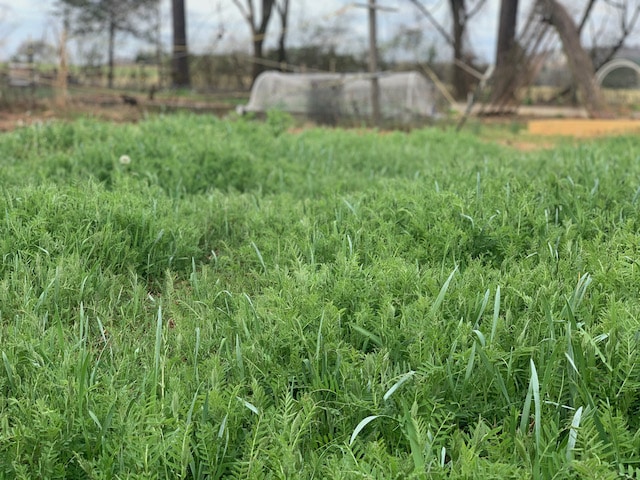
How Cover Crops Benefits Your Garden
Different cover crops offer different benefits. Some, like clover and hairy vetch, add nitrogen back into the soil; others, like winter rye and radish, break up compacted soil. Still others, like mustards, can suppress weed seeds and diseases.
All cover crops anchor the soil into place, prevent erosion of valuable topsoil. This also builds and promotes good soil structure, which will benefit crops that follow them. This is in addition to the copious amounts of organic matter offered by these crops, which nourish and benefit your garden for the long-term.
In addition, some cover crops, when allowed to flower, offer nectar and habitat for beneficial insects.
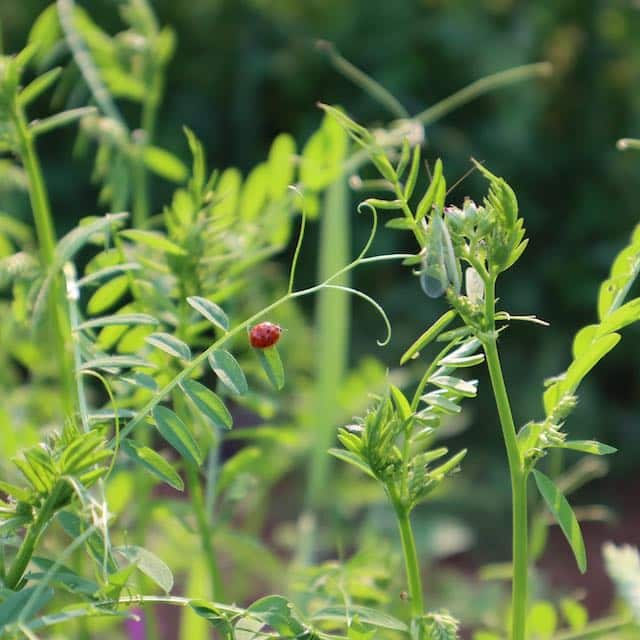
Why Plant Cover Crops in the Fall
While I’m a proponent of summer cover crops to fill in gaps during the season (buckwheat is my favorite), planting cover crops in the fall offer unique benefits:
- Seeds germinate easily in warm soil
- You likely have empty space from summer harvested crops
- Some kinds overwinter (depending on your garden zone), serving as a living mulch for early spring crops and early flowers for spring pollinators
- Some die over the winter (depending on zone), offering the benefits of the cover crop in organic matter while creating a “blank slate” when spring arrives
- They offer the joy of something GROWING over the winter and early spring
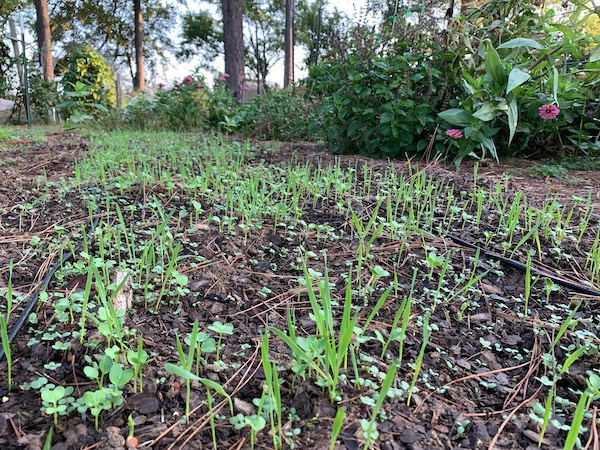
How to Get Started
I have to admit, as a beginner looking to grow my own cover crops, I quickly felt overwhelmed. What should I plant? When should I plant? What should I expect? Will they die on their own or will I have to “terminate” them myself?
As in many areas of gardening, my own experience became my greatest teacher, despite doing as much research as I could on the front end.
After growing cover crops for a few years, here are my favorites that I recommend beginners to start out with. You won’t be disappointed.
*disclosure: I purchase all of my cover crops from True Leaf Market. Links below are affiliate links, which means if you click through and make a purchase, I will earn a commission at no extra cost to you.
Garden Cover Crop Mix
While this wasn’t my first fall cover crop to grow, it has become my favorite. The Garden Cover Crop Mix from True Leaf Market is the perfect choice if you don’t know which kind of cover crop to grow.
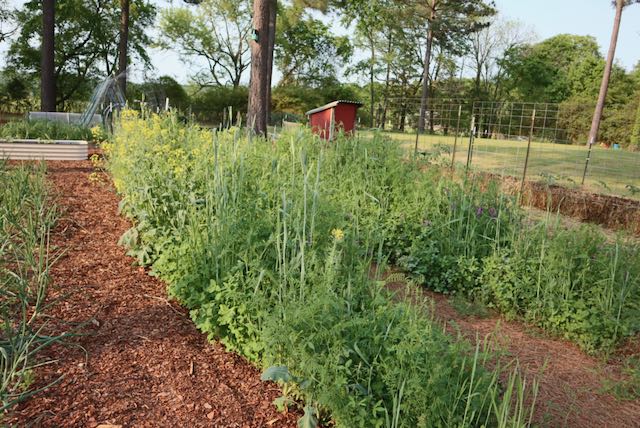
The Garden Cover Crop Mix offers the following cover crop seeds:
- austrian field pea
- hard red winter wheat
- triticale
- daikon radish
- collards forage
- hairy vetch
- crimson clover
- berseem clover
- yellow mustard
You don’t need to know what each of these crops does for your soil. And you don’t have to worry if one doesn’t work out in your garden. Because it’s a mix, you know that your garden is getting a variety of benefits from the diverse selection. In my opinion, the Garden Cover Crop Mix is the easiest cover crop for a beginner to get started with.
How to Grow: Sow the seeds in the fall 1-2 months before your average first frost date at the rate indicated on the package. I just scattered the seeds and raked them in lightly. Water well and keep the soil irrigated during dry periods.
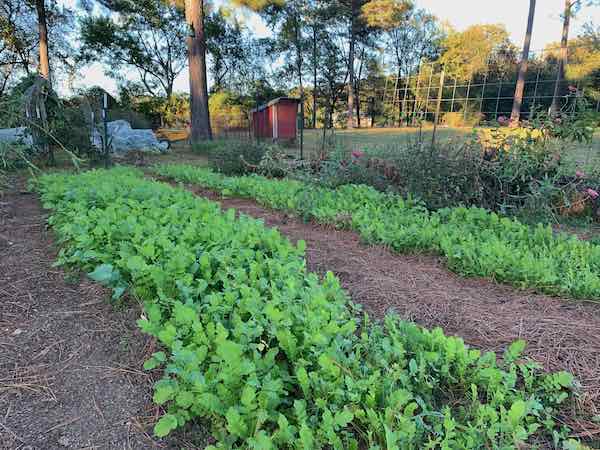
My experience: The seeds germinated quickly and the crop rapidly established for me. Most of the crops survived my winter (I’m zone 7b), though some, like the peas, did not. In the winter, the growth stalled out, but the crops that did survive grew rapidly in the late winter and early spring.

I left the cover crop to fully mature because beneficial insects covered the plants. When the crops started to die back in late June, I terminated the crop with a weed eater, leaving the dead crop on the soil to break down naturally. Some of the winter rye started to grow back, and I cut it down one final time before planting a crop of corn a few weeks later.
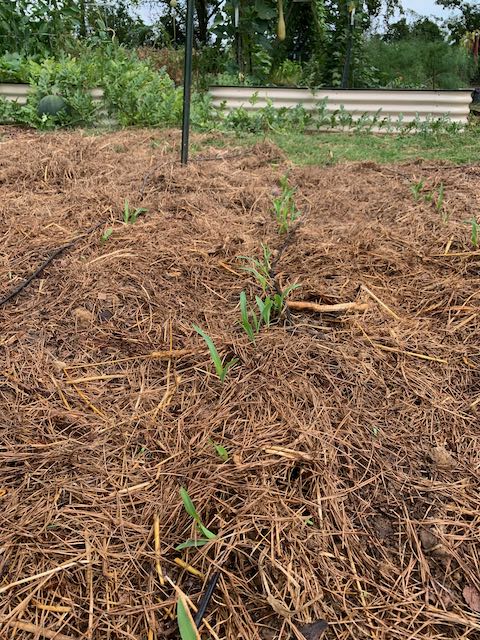
Choose the Garden Cover Crop Mix If:
- you don’t know where to start
- you have an open area where you are not planting fall crops
- for both in-ground or raised bed gardens

Hairy Vetch
Hairy Vetch is one of my favorite cover crops to grow because of its beauty and versatility. It increases organic biomass, fixes nitrogen in the soil, and offers beautiful purple flowers that early pollinators love.
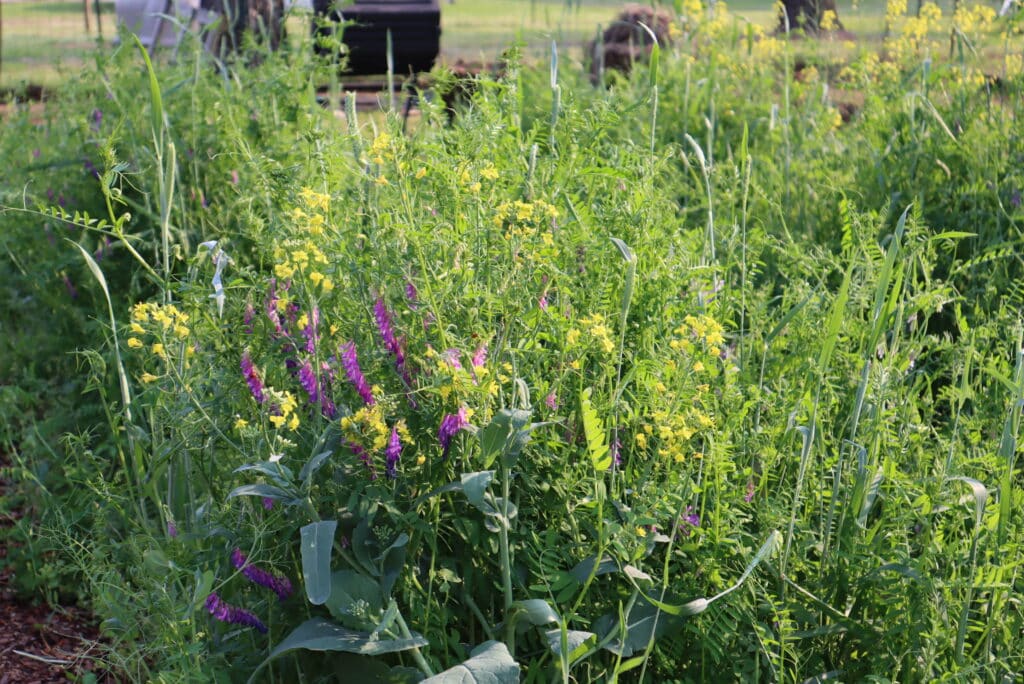
The unique feature about hairy vetch is that it has a vining or trailing growth habit. When planted with no vertical support nearby, it rambles horizontally, creating a matte of beautiful green. When planted near a vertical support like a trellis or even a tomato stake, it will climb.
How to grow: Sow seeds in September, broadcasting and raking in lightly, irrigating well.
My experience: I love planting hairy vetch in the fall and using it as a living mulch for my transplants in the spring.
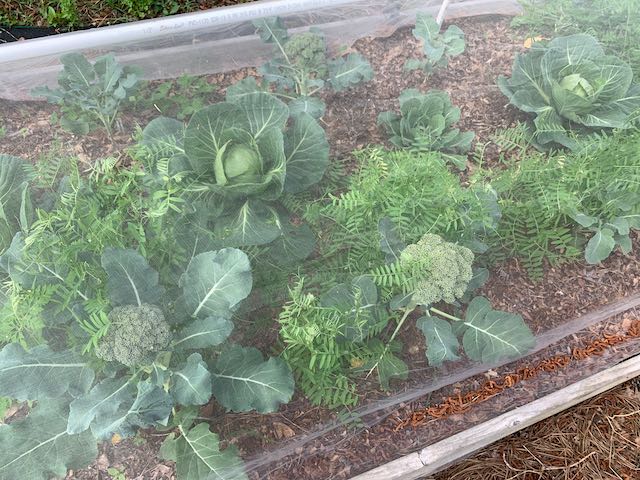
While you can plant in the spring, hairy vetch is hardy down to zone 3, which means if you plant it in the fall, you’ll have an early cover crop with early flowers when spring arrives. In my zone 7b, it starts to get brown and brittle in the heat, but usually that’s after we’ve had months to enjoy its beautiful flowers.
Choose Hairy Vetch If:
- you have a raised or ground bed, or even a container
- you want to experiment with living mulch
- you know your garden needs extra nitrogen
Crimson Clover
Crimson Clover is another beautiful option for adding nitrogen back into the soil. It helps soil tilth and it’s great at weed suppression. Growing to about 6-12″ tall, it produces beautiful red blooms in the spring that are loved by pollinators — particularly bees.
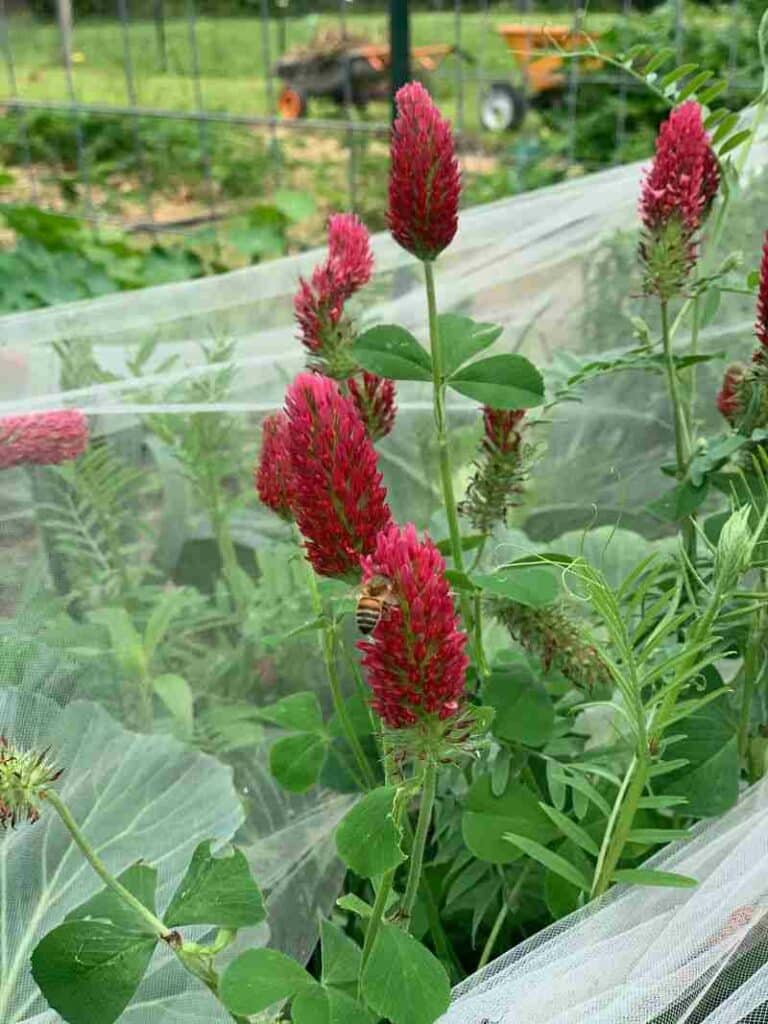
How to Grow: In zones 6 and above, plant in late summer to early fall. Scatter the seeds and rake in lightly, irrigating in dry periods. Crimson clover is hardy to zone 6, so if you live in a cooler area, you need to wait til spring to plant.
My Experience: I use Crimson Clover similar to the way I use hairy vetch. Because it doesn’t climb (it has more of a clumping habit), it is my choice for raised beds when I want a living mulch that is a little more tame.
Choose Crimson Clover If:
- you want a compact plant that offers nitrogen and weed suppression
- you’d like a living mulch between fall crops like broccoli and cabbage
- you want to grow a crop whose early blooms will attract bees and pollinators
- suitable for in-ground, raised bed, and container gardens
Winter Rye
Though it has a bit more of a learning curve, winter rye offers specific benefits not offered by some of the other single cover crops. Not only is winter rye a powerhouse at suppressing weeds, it also breaks up compact heavy clay soils. The root system offers fantastic erosion control, which is a huge benefit in the winter with rain and wind. In addition, winter rye can help reduce some soil-borne diseases.
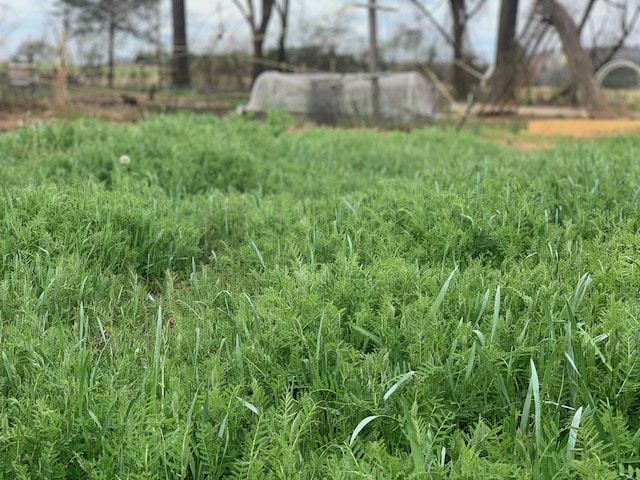
How to Grow: Scatter winter rye seed in blank garden space (I recommend using this for in-ground gardens; terminating it may be a bit tougher in a raised bed) in the fall (September or October is a good choice for most places). Since it is hardy to -30F, it will live up to its name and will survive the winter, so be prepared to deal with it the following spring by terminating it in some way.
My experience: I grew winter rye in an area where I wanted to grow tomatoes the following year (to access the benefit of reduction of soil-borne diseases). But I found that it didn’t grow very tall by the time I needed to terminate it and plant my tomatoes (in early April). Though I cut it down with a weed-eater and planted the tomatoes through it, I felt like I didn’t get the full benefit of the crop. Plus, I didn’t find it to impact the early blight I was hoping it would reduce.

My advice is to plant it in an area that you won’t be planting early crops in the spring unless you’re fine with terminating the crop before it reaches its full potential. If you only grow it for winter erosion control and spring weed suppression, it’s a great option.
Also, keep in mind that one way it suppresses weeds is to inhibit seed germination, so avoid planting seeds in the area immediately after you terminate it. Give it 3-4 weeks minimum. Or better yet, plant transplants in that area instead.
Another thing to consider is that winter rye can be a bit harder to terminate. In my experience, it can be mowed down easily (I use a weed eater), but it may require two cut-downs. Of course, you could till it in, but as a no-till gardener, I don’t have personal experience with that.
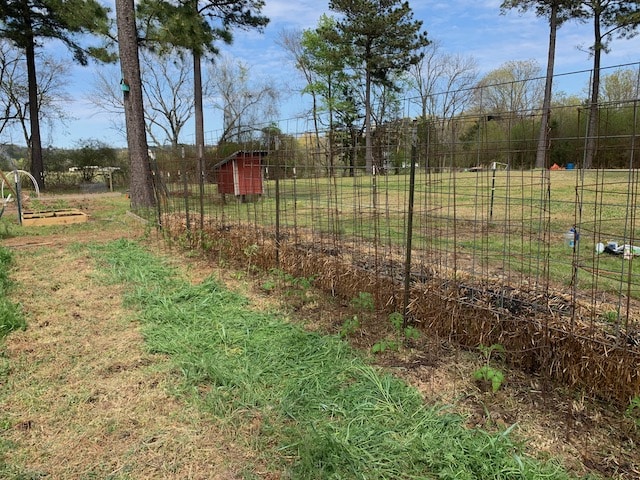
Consider Winter Rye If:
- you have heavy, compacted clay soil
- you are willing to put in the effort to terminate it, since it won’t winterkill in most areas
- you have an in-ground garden
Mustard
Growing mustard as a cover crop may seem a bit odd to most beginners. Those of us in milder zones know mustard greens as a hardy crop that overwinters well and offers greens when other greens have died off. But mustard offers unique benefits to the garden itself.

Mustard contains high amounts of glucosinolates, which serve as biofumigants. If that sounds Greek to you, here’s what it means: it can suppress weeds and diseases, and it even repels pests. Michigan State University cited some studies that linked incorporation of mustard into the soil to reduction or suppression of pathogens such as verticillium in potato, fusarium root rots in beans and peas, and others. Not only that, but mustard also is a nitrogen source, and its deep taproot helps break up compacted soils.
You do need to know that not all mustard cover crops are created equal, as they contain different types of glucosinolates. If we look at the Mighty Mustard blend from True Leaf Market, this blend contains it all:
- white gold suppresses broadleaf weeds
- kodiac and pacific gold is active against insects, some nematodes, and some fungal pathogens
One thing to keep in mind is that brassicas (of which family mustard is) do not support beneficial fungal mycorrhizal networks in the soil and there’s even speculation that they are toxic to soil fungi.
The benefits of mustard occur when the plant is cut down and the cells are ruptured. It’s important to mow these down 6-8 weeks before planting the following crop in order to not only gain the most benefit but also to allow beneficial fungal networks to rebuild themselves.
How to Grow: Mustards can be planted a bit later because of their cold tolerance — about a month before your average first frost date, or even a bit later. Broadcast the seeds and rake in lightly, watering well.
My experience: While I’ve grown mustard in the winter, I haven’t specifically paid attention to the benefits it offers as a cover crop.
Grow Mustard If:
- you know you have a specific reason to want the cleansing effect of mustard on your garden
- you’re prepared to cut it down 6-8 weeks before you plant a spring crop
- suitable for ground beds, raised beds, and containers
When to Plant Fall Cover Crops
Fall cover crops can be planted on a more flexible schedule than other garden crops. Most zones can plant most crops in September and October (zone 2 can start as early as July; zone 9 and above should wait til October.
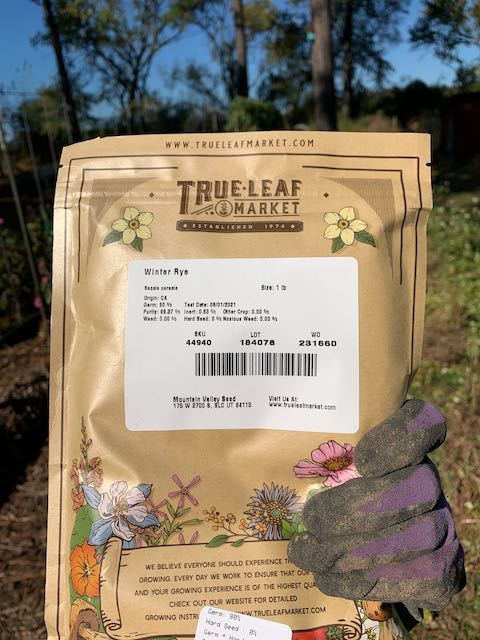
For most of these crops, the key is to allow them to at least establish themselves before winter before growth stalls. If they overwinter, this growth may be minimal. If they don’t overwinter in your zone, plant a bit earlier to ensure plenty of growth before cold kills them.
Final thoughts
The biggest advice I can give you on cover crops is to just start somewhere. Test different options and see what you like and what you might adjust in the future. For an organic gardener, cover crops can offer one more asset in your soil building bank.
To shop cover crop seeds from True Leaf Market, click here.
Do you get overwhelmed with garden planning?

Subscribe here for my best tips to plan your garden in just 7 days -- all for FREE.
Plus, I'll send you my "In the Garden E-mail" on Fridays, periodic updates on garden resources relevant to you, and you'll receive access to my entire bank of free garden downloads!
You are also agreeing to our privacy policy.

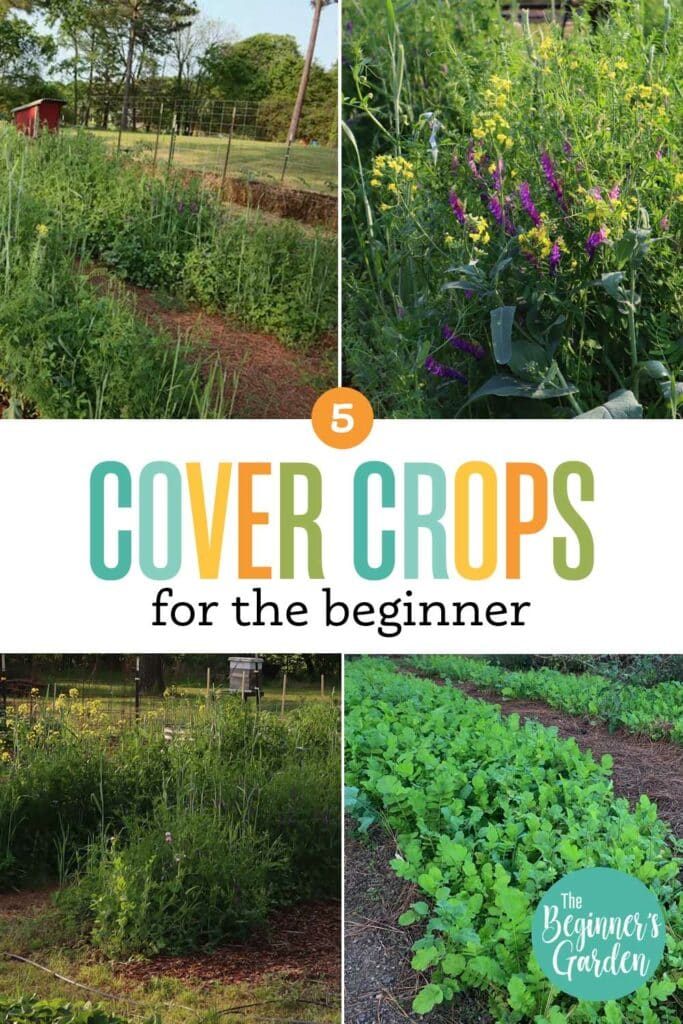
Many thanks Jill for the very informative article.
Walter Ray Davis Jr
So do I plant cover crops even when I’m growing winter vegetables? I like to grow in the winter and summer so does this mean I’d have to not grow one winter in order to do cover crops?
It depends on the vegetable. For cabbage and broccoli, I have grown lower growing cover crops underneath them (hairy vetch and crimson clover are great). But when using the taller cover crops (like the garden cover crop mix and winter rye), I usually only plant bare soil with those. If you’re growing in the winter, though, you likely have a mild climate, so you may need to experiment a little to find out what works best for you. That’s what I did.
All my garden is raised beds. I planted cover crops last year, but was at a loss as to what to do in May when I was ready to start planting my regular crops. I guess I could just hop into the beds with a weed whacker. But it would not be easy to trench my rows for planting seeds. If I pull the cover crops like I would weeds, then I am pulling the roots also. I am still not sure if this will work for me.
I found this to be a challenge at first, too, so I learned how to be strategic in what I planted. That’s why I mentioned some cover crops, like hairy vetch, being ideal to plant transplants into. Direct seeding is a bit more tricky. I terminate by using a weed whacker, and then waiting a couple of weeks before seeding the next crop. In next week’s podcast episode (Sept. 27, 2022), I talk more specifically about this so check that one out.